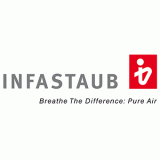
EAC is a certification mark which indicates that the products conform to all Technical Regulations of the Eurasian Customs Union. It aims to protect human life and health and the environment, as well as prevent misleading information being passed on to the consumer. All products that have passed relevant conformity assessment must be marked with the EAC symbol. Thus the EAC mark is an important prerequisite to bringing a product to market in the EAEU.
Some products that are first introduced to market in the EAEU must prove their conformity with the existing Technical Requirements of the EAEU. The Technical Regulations foresee 3 types of proof of conformity: EAC certification, EAC declaration and state registration.
The creation of a Customs Union and later of the Eurasian Economic Union between Russia, Belarus, Kazakhstan, Armenia and Kyrgyzstan led not only to abolition of customs borders and other obstacles between states. It also led to a subsequent coordination of Technical Regulations. The national standards such as GOST-R and TR in Russia, STB in Belarus or Kazakh GOST-K in Kazakhstan have been replaced by the binding technical rules applicable for all members of the Eurasian Economic Union. Another important aspect of the new standards is their coordination with the European standards.
Legal framework
As it stands, 48 Technical Regulations have been passed. The products for which no Technical Regulation has been developed still underly conformity assessment following national norms and standards of the member states. For example, the certification in the areas of fire protection and metrology are still subject to national regulations.
Products that do not underly mandatory conformity assessment may be certified with a voluntary GOST certificate.
The EAC markings were introduced through the board decision of the EAEU Commission No. 711 on July 15, 2011.
There are some important features of the EAC marking:
- Only the products which are subject to relevant Technical Regulations of the EAEU can be marked with the EAC marking. For a voluntary certification GOST marking is still used in Russia.
- The manufacturer himself is responsible for the choice of the relevant Technical Regulations for his product. With an EAC declaration the manufacturer declares that his product meets the requirements of the applicable Technical Regulations. In the case of a EAC Certificate an assessment based on technical documents, test reports or the production audit required.
- Different types of products require different schemes of conformity assessment, from the analysis of technical documents to on site production audits.
- Only a company established in the territory of the customs union may apply for the EAC certification or EAC Declaration. A foreign manufacturer needs an authorized representative in the Eurasian Economic Union.
- The EAC Certification or EAC Declaration can be valid for up to 5 years depending on whether it is a one-time supply or serial production.
- The products, which conform to all Technical Regulations and passed conformity assessment successfully are allowed to be used and sold in every member state of the EAEU.
- The EAC marking must be attached to every product, etiquette, insert or sticker.
- In addition to the EAC marking, no other mark or seal which could contradict to the "EAC" is permitted.
The EAC marking process consists of the following steps:
- The manufacturer has to decide whether his product is subject to conformity assessment according to the Technical Regulations of the EAEU and which standards need to be applied. One product can be subject to several standards. The EAC
conformity assessment is required for all products listed in the common list of products (in Russian) issued by the Eurasian economic commission under No. 620 from 07.04.2011. Here you will find a summary of the products that are subject to EAC certification and EAC Declaration. For other non-listed products, a national regulation for example TR marking must be considered, i.e. the measurement equipment or Fire-fighting equipment. - The manufacturer has to determine the conformity assessment process: certification, declaration or state registration. This depends on the classification of the product and its application area. Certification and declaration processes have different schemes of conformity assessment depending on the type of supply: one-time supply or serial production. Different schemes require different methods of demonstrating conformity and the volume of documentation and tests required.
- In the next step the manufacture has to identify the scope of the conformity assessment required: internal assessment, mandatory assessment and tests by a notified body or a manufacturing audit carried out by a notified body.
- The final step is to prepare all necessary technical documentation and to apply for a conformity assessment. After the assessment has been completed and the EAC Certificate or Declaration has been issued the manufacture attaches the EAC marking visibly, legibly and indelibly to the product.
Summary of differences between EAC Certificate and EAC Declaration
| Criteria | EAC Certificate | EAC Declaration |
|---|---|---|
| Applicant | producer, importer, person with power of attorney | producer, importer, person with power of attorney |
| Classification of products | made by the certifying body | made by the applicant |
| Proof of conformity | based on the test report of the accredited test laboratory | based on applicant's own evidence or the test report of the accredited test laboratory |
| Quality assurance | comprehensive production audit through the certifying body or external ISO 9001 certification | quality assurance is done by the applicant |
| Issuing of the certificate of conformity | certification body on an official form | applicant on a normal sheet of paper |
| Registration of the certificate of conformity | certification body | applicant or certification body |
| Validity | 1 to 5 years, depending on the regulation | 1 to 5 years, depending on the regulation |
| Responsibility | lies with the certification body | lies with the applicant |
| Surveillance | certification body | - |
Difference Between CE and EAC Marking
The CE and EAC markings pursue the same goal: they indicate that a product meets the essential safety and health requirements. Nevertheless, they refer to different markets, legal frameworks, and conformity assessment procedures. For manufacturers operating both in the European Union and in the Eurasian Economic Union (EAEU), it is important to clearly distinguish between the two systems.
Scope and purpose
- CE marking: A prerequisite for placing a wide range of product groups on the market within the European Economic Area (EU and EFTA member states). It indicates compliance with the relevant EU directives and facilitates the free movement of goods within the internal market.
- EAC marking: The conformity mark of the Eurasian Economic Union, required for market access in Russia, Belarus, Kazakhstan, Armenia, and Kyrgyzstan. It confirms compliance with the applicable technical regulations (TR CU / TR EAEU) and is mandatory for placing products on the EAEU market.
Legal basis and Conformity Assessment
- CE marking: based on EU regulations and directives (“New Approach” and the “Global Concept”). The manufacturer determines which directives apply, carries out the required conformity assessment, prepares the EU Declaration of Conformity, and affixes the CE mark.
- EAC marking: based on the unified technical regulations of the EAEU. Depending on the product, conformity assessment is carried out in the form of an EAC certificate or an EAC declaration; all evidence is registered in the unified EAEU databases.
Key differences
| Criterion | CE marking | EAC marking |
|---|---|---|
| Market area | European Economic Area (EU/EFTA member states) | Eurasian Economic Union (Russia, Belarus, Kazakhstan, Armenia, Kyrgyzstan) |
| Legal basis | EU directives and EU regulations | Technical regulations TR CU / TR EAEU; decisions of the EAEU Commission |
| Forms of conformity assessment |
Internal production control; involvement of notified bodies where required; EU Declaration of Conformity |
EAC certificate or EAC declaration; possible testing in accredited laboratories and production audits |
| Conformity mark | CE mark on the product, packaging, or accompanying documentation | EAC mark on the product, packaging, or accompanying documentation |
| Validity | depends on the directive/standard; often linked to product or series modifications | conformity documents generally valid for up to 5 years, depending on the regulation and assessment scheme |
Practical implications for exporters
In practice, CE marking does not replace EAC marking — and vice versa. Companies wishing to market their products both in the EU and within the EAEU must undergo separate conformity assessments for each market. We are happy to support you in determining, based on your specific product portfolio, which EU directives and which EAEU technical regulations apply, as well as which conformity documents (CE, EAC certificate, EAC declaration) are required in each individual case.
You can find detailed background information in our article on the difference between CE and EAC marking.
How Can We Help?
Navigating the regulatory landscape of the Eurasian Economic Union can be challenging, but our team provides comprehensive support for companies seeking to bring their products to EAEU markets. We assist with EAC certification, EAC declaration, and state registration, offering tailored solutions for specific product categories and ensuring compliance with all applicable Technical Regulations.
Our experts help prepare and review technical documentation, ensuring it meets all legal requirements and is accurately translated into Russian or the official language of the member state where the product will be sold or used. This attention to detail is essential for a smooth market entry, reliable product distribution, and legal compliance across all EAEU member states.
With extensive experience across various industries—including machinery, electronics, medical technology, food processing, and consumer goods—we provide targeted guidance to facilitate conformity assessment, certification, and declaration processes. We support you at every stage, from selecting the appropriate Technical Regulations and conformity assessment schemes to completing all necessary documentation and affixing the EAC marking correctly.
By leveraging our expertise, companies can confidently access the EAEU market, streamline certification processes, and ensure their products meet all safety, health, and environmental requirements.



















































